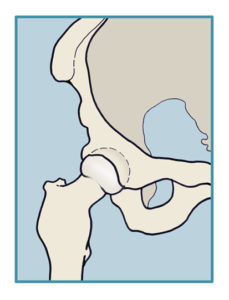 The problem with saying the hip joint is one of the more important joints in the body is that at one point or another I say that about every joint.
The problem with saying the hip joint is one of the more important joints in the body is that at one point or another I say that about every joint.
That being said, the hip joint is special.
As the bridge between the upper and lower body, it is hard to escape its fundamental influence on all of our movement patterns, and its relationship to almost all pain issues that people tend to deal with.
My teaching both for clients and yoga classes goes through phases.
Always trying to look for images that resonate with people best, it often comes down to tuning into what an individual is going through or does for a living.
Working with an athlete I will almost always zero in on the technique of their sport. A baseball player needs to stand like they were in the batter’s box; a tennis player needs to think about the position in which they set to receive a serve. Both of these positions usually serve them much better than their default posture and movement patterns.
To be clear, this doesn’t go for most runners since way too many people run without any thought to technique. They get out there and run which leads to a host of different aches and pains.
Aside from athletes because most of my clients and students are regular Joe’s and Jane’s, the main image I have been working with for the past six months or so is—put the femur bones correctly into their sockets and we are good to go.
An overwhelming number of people live with their legs externally rotated in the hip sockets. Now think about the baseball or tennis player. Both of those images should bring to mind someone whose knees are slightly bent with the butt stuck out.
This type of stance puts the legs correctly into their sockets and takes the athlete into their power center deep in the core from which they will get optimal performance.
But let’s leave the athletes behind and talk about everyone else. If we stand with the legs in perpetual external rotation several negative things tend to happen.
External rotation of the hip joint tends to lead to an external rotation of the feet that often puts pressure on the knee joint and usually brings the distribution of weight to the outer foot rather than the inner or whole foot, which is ideal.
External rotation of the hip joint also tends to constrict the sacroiliac joints (SI)—pretty important joints as well— which should be fairly easy to feel if you stand up and internally and externally rotate your legs with your hands on the pelvis where the hips meet the sacrum.
Constriction in the SI leads to an endless possible array of misery.
Finally, for the sake of not letting this post go on forever, external rotation of the hip joint has a profound effect on the position of the head and neck. This might be less obvious to feel if you stand and externally rotate the legs but its effect is still quite powerful.
You can scan the whole body this way to feel what excessive external rotation in the hip joint does to different areas of the body. And if you are in pain, tune in to the place of pain and rotate your legs in and out of their sockets to feel the effect that different position do to your place of pain.
Next I will write about the different issues that arise if our hip joints are too loose or too tight due to muscular or ligamentous tightness or laxity.
And you can also click below or above to find out more about an upcoming three-hour hip workshop that I will be offering live online.
